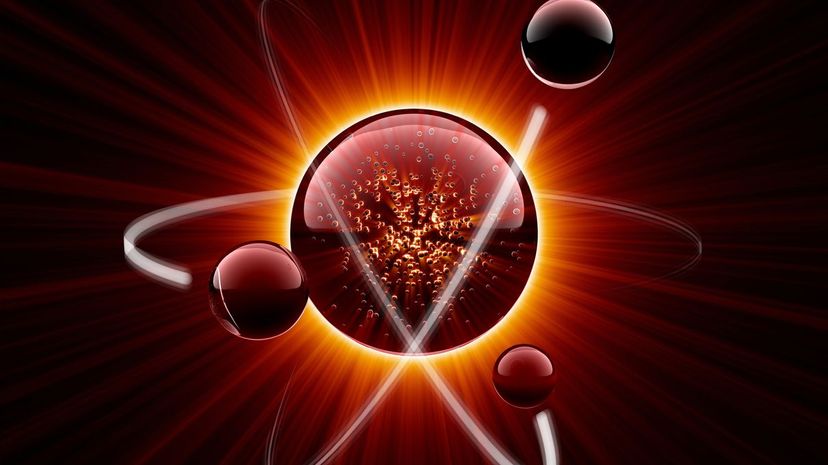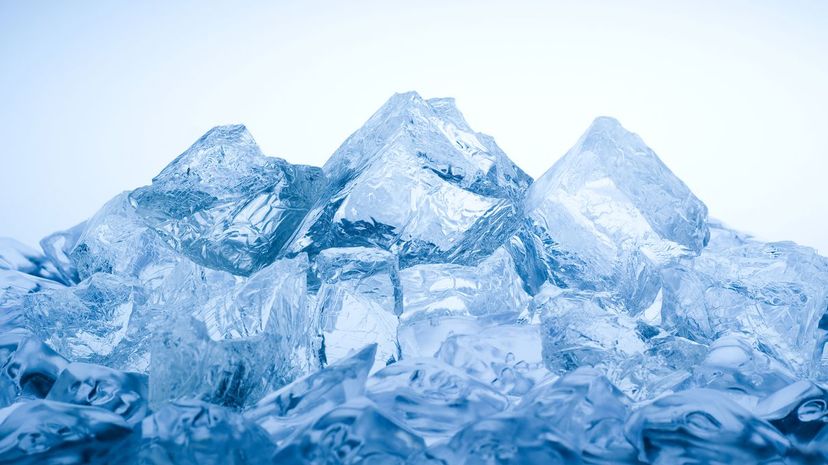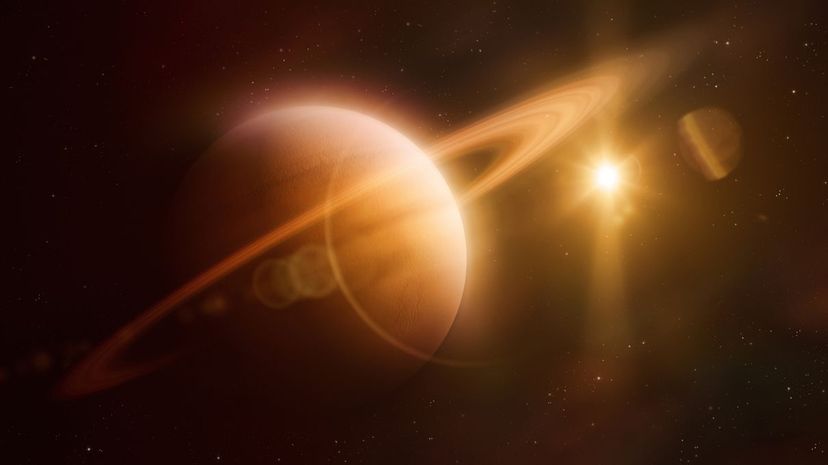
About This Quiz
Hands down, the best part of middle school is lunch, but that's the best part of most days. Somewhere further down the list is science class. Love it or hate it, science is a big part of the middle school experience, and it's where many of us get our first taste of science. It's a place to start learning about the world and everything in it and all the reasons why things happen the way they do. Things like weather or rocks or the sun and the stars, which used to be unknowable forces of nature, all get explained to you in science class. It opens up a doorway, and for that reason, even if you don't get it all, it's pretty cool stuff. Better than algebra, right?
If you get super stoked for science or you hate it with a passion, you still need to know some - it's hard to manage to get through life without it. You can't go around thinking that thunder is caused by angry sky gods for too long because that'll get you a lot of weird looks from people, ya know? So let's see what you remember from that science class. Take the quiz and show us what ya got!

A typical atom consists of protons, neutrons and electrons. The idea of a positron was theoretical for a good chunk of time until they were discovered in 1932. They're basically positively-charged electrons. If a normal electron and a positron collide, they would destroy each other.

Igneous, sedimentary and metamorphic are your basic rock types from which all other rock types are made. Igneous come from the cooling of magma and are crystalline in structure, sedimentary are made from layers of compress debris and metamorphic are rocks that are changed by a result in alterations in pressure and temperature.

Newtons are units of force that were named after Sir Isaac Newton. By definition, a Newton is the force needed to make 1kg of mass accelerate at a rate of one meter per second per second. An apple in Earth's gravity exerts about one Newton of force, in case you were wondering.
Advertisement

Hertz is a unit of measurement that measures frequency, like a wavelength. Something with a frequency of 1 happens once per second. Humans can hear sounds that are between 20 and 20,000 Hertz. The Middle C note on a piano has a frequency of 262 Hertz, which means the sound vibrates 262 times in one sound.

Charles Darwin published his book "On the Origin of Species" in 1859 which detailed his observations regarding the idea of evolution. It was met with much resistance in both the religious and scientific community, and to this day, some people still don't believe in it.

Albert Einstein's theory of relativity is arguably the most widely known scientific theory in the world alongside Darwin's theory of evolution. Einstein crafted his theory that says the laws of physics are the same for all non-accelerating observers.
Advertisement

Only plant cells have chloroplasts, which are where photosynthesis takes place. These organelles can convert sunlight that the leaves of the plant absorb into usable energy in much the same way an animal will convert the food they consume into energy.

Our little solar system is located in the Milky Way Galaxy. It's what is known as a barred spiral galaxy and could be up to 200,000 light-years across. It's estimated that the Milky Way is about 13.51 billion years old.

The speed of light is 186,000 miles per second while the speed of sound is only 767 miles per hour. Technically it does vary; the speed of light is measured in a vacuum, and the speed of sound is measured in air at a temperature of 20C. Any variation to those constants will alter the speeds, but those are the generally accepted scientific values.
Advertisement

When they say light's fast, they're not kidding: Light travels at 299,792,458 meters per second or about 186,000 miles per second. The closer an object gets to the speed of light, the slower time becomes, and it's theorized that is you tried to exceed the speed of light, you could go back in time. That's just a theory, of course.

Condensation is what happens when a gas changes state, or condenses, into a liquid, hence the name. Crystallization can occur after that and transform a liquid into a solid. A solid could also sublimate into a gas or melt into a liquid.

The Doppler Effect is the name of this phenomenon when the wavelength changes based on your distance from the object. Doppler radar is used in meteorology to measure cloud movements and precipitation and even in baseball with their Statcast System.
Advertisement

Sound can work a lot like any solid object when it hits a wall and the waves bounce back toward where they came from. Smooth, hard surfaces are best for reflecting sound, while soft surfaces and objects will absorb the waves rather than reflect them.

At 0C or 32F, water will freeze into a solid. That's for pure water at normal pressure, and of course, that value can change with various variables introduced. For instance, supersaturated saltwater will free at -21.1C, and a liquid like ethanol won't freeze until -114.1C.

Approximately 71% of the Earth's surface is covered in water, most of which (around 96.5%, in fact!) is not drinkable because it's saltwater. The amount of freshwater is obviously small by comparison, and of that small amount, very little of it is actually on the surface. Most water is trapped underground and hard to access.
Advertisement

Your typical human body has 206 bones inside of it. Interestingly enough, that's not a constant number throughout your life. When a human is born, they actually have 270 bones, but many of them fuse to become the 206 an adult will have.

Absolute Zeros is also known as 0 Kelvin and is considered, at least theoretically, the coldest temperature possible. It is equivalent to -273.15C or -459.67F. At this temperature, it's theorized that the atoms in a substance would cease motion entirely.

We have eight planets in our solar system, and they are Mercury, Venus, Earth, Mars, Jupiter, Saturn, Neptune and Uranus. Pluto was once considered the 9th planet, but it was dropped from official planet status and is now considered a dwarf planet since it doesn't meet all criteria necessary to be considered a real planet.
Advertisement

Robert Hooke discovered cells back in 1665. The name "cell" came from his observation that the cells he first observed reminded him of "cellula," the small rooms that monks used to live in. That's why prison cells use the same word today.

The Earth is made up of four layers. The center is the inner core and is extremely hot. That core is surrounded by the outer core and then the mantle and finally the surface that we call the crust.

Matter typically exists in one of three states: solid, liquid or gas. Solids are things like tacos and rocks, liquids are water and Mr. Pibb, while gas is something like oxygen or that smell in the basement.
Advertisement

Mercury is not a gas giant while the other planets listed are. Neptune, Uranus, Saturn and Jupiter are all made of gas like hydrogen or helium though they have small, solid cores.

37 Celsius or about 98.6 Fahrenheit is considered a normal human body temperature. This can vary only slightly from person to person. A temperature even a couple of degrees above normal can be extremely dangerous. A fever that reaches over 40 C can be deadly.

On average, the moon is about 238,855 miles from earth. That's an average because the moon's orbit can take it closer and further away and, of course, you need to take into account where you're measuring from on Earth as well. It can get as far away as 252,088 miles.
Advertisement

10 major cloud types are in four major cloud groups. The 10 types consist of cirrus, cirrostratus, cirrocumulus, altostratus, altocumulus, stratus, stratocumulus, nimbostratus, cumulus and cumulonimbus.

The liver is not a part of your circulatory system, but your heart, lungs and arteries are, as well as your veins. The circulatory system is responsible for blood flow, oxygen, nutrients and hormones traveling through your body.

The earth is about 4.543 billion years old, of course back in the day it wasn't as hospitable as it is now. Debris formed the planet, and it was generally an unpleasant, extremely hot and volatile place until the very first basic life formed about 4 billion years ago.
Advertisement

It takes 225 Earth days for Venus to travel around the sun, completing one Venusian year. However, it rotates on its own axis once every 243 Earth days, effectively making a year on Venus shorter than a day.

In Einstein's most famous equation, energy (E) equals mass (m) times the speed of light (c) times itself. That means, in a nutshell, the energy in matter is equal to its mass times the speed of light squared. And that, in turn, means matter has a lot of energy in it.

Even though we need oxygen to breathe, our atmosphere is only made up of just under 21% oxygen. The majority of the gas in our atmosphere is actually nitrogen, which makes up about 78%, and then other gases like carbon dioxide and argon.
Advertisement

Human bodies have 11 main systems. They include the following: circulatory, respiratory, skeletal, digestive, immune, endocrine, muscular, nervous, renal, integumentary and reproductive.

Radiation is not one of the four fundamental forces. The four are electromagnetism, gravity, strong interaction and weak interaction. They're considered the four fundamental forces since science doesn't think they can be reduced down to any other forces.

Group one on the Periodic Table are called the Alkali Metals, and the group consists of lithium, sodium, potassium, rubidium, cesium and francium. They are strong bases that can neutralize acids and react when placed in water.
Advertisement

Since 2016, there have been 118 elements on the Periodic Table of elements. Element 118 is oganesson, which was first synthesized in the year 2002 and is represented by the symbol Og.

The weather as we know it happens in the troposphere. It's the first of the five layers of the atmosphere that surround the Earth. The other layers, in order, are stratosphere, mesosphere, stratosphere and exosphere.